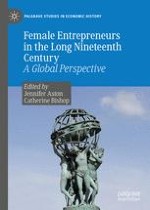2020 | OriginalPaper | Buchkapitel
10. More Than Just Penny Capitalists: The Range of Female Entrepreneurship in Mid-Nineteenth-Century US Cities
verfasst von : Susan Ingalls Lewis
Erschienen in: Female Entrepreneurs in the Long Nineteenth Century
Verlag: Springer International Publishing
Aktivieren Sie unsere intelligente Suche, um passende Fachinhalte oder Patente zu finden.
Wählen Sie Textabschnitte aus um mit Künstlicher Intelligenz passenden Patente zu finden. powered by
Markieren Sie Textabschnitte, um KI-gestützt weitere passende Inhalte zu finden. powered by
